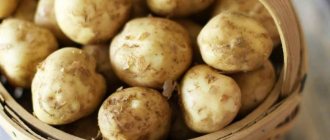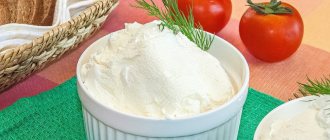Liver sausage egg recipe
You watch the video and it seems that making liverwurst at home is so easy...
If you don’t measure meat exactly in grams, it will still work out??
I’ll try to make your cowbasa tomorrow...
We have always loved liver sausage, but this kind of sausage used to be tastier. And now, many liver sausages are no good. Of course, making liverwurst yourself according to a recipe is labor-intensive, but sometimes you can indulge))
It turned out to be a great sausage! A forgotten taste of childhood...
The composition is excellent, there is no trace of any chemicals. We will try.
kolbasadoma.ru
Liver sausage: recipe
People born and lived during Soviet times are probably nostalgic for the delicate taste of liverwurst. In the USSR, the whole country bought this meat product. It was loved for its soft consistency, satiety and affordability. Today, markets and store shelves are replete with these products, but the quality leaves much to be desired. After all, the composition contains about 30% meat or liver, everything else is soy protein, starch, various thickeners, artificial additives that improve presentation.
In order not to poison your body with low-quality purchased “delicacies”, it is easier to make healthy food on your own. Don't think that liverwurst is difficult to prepare. It's easier than it seems. There is an incredible number of interesting and tasty variations. You can use liver and offal (pork, beef, chicken, turkey). Knowing the technology, you can create a healthy, safe and nutritious product with your own hands. Delight your family with amazing recipes that you will learn in this article.
Instructions
We remove the film from the stomachs and clean them of impurities. Cut the pieces together with lard and grind in a meat grinder. If you wish, you can omit adding fat, but in this case, liver sausage prepared at home will not be juicy. Pour starch, gelatin into the crushed mass, beat in the yolks and all the spices. Mix well.
Place the minced meat on cling film and carefully roll it into a roll. To prevent the inside from slipping out, we tie the ends with thread. Place the formed product in a baking sleeve and immerse it in water. After boiling, cook for 1.5 hours. Let the product cool at room temperature without removing it from the bag, and place it in the refrigerator for 4-5 hours. After the specified time, the delicacy is suitable for consumption.
LitLife
I. V. Lukyanenko
Appetizing sausages and pates
What you need to know about meat products
Meat
Meat is the mainstay of most people's diets. You can prepare many delicious and nutritious dishes from it; it gives you a feeling of fullness quickly and for a long time. Meat is a source of protein, essential amino acids, iron and other substances important for humans.
They eat meat, internal organs and blood of domestic and wild animals and birds. The grade of meat is determined by what part of the carcass it is taken from, as well as in what quantity it contains components that reduce the nutritional value of meat, especially bones and connective tissue. Commercial grading is usually based on the number of bones in the meat. According to these indicators, cattle meat is divided into three, and small livestock meat into two commercial grades. When starting to cook, special attention should be paid to the content of connective tissue - the method of cooking meat depends on this. The meat of cattle, the individual muscle bundles of which vary significantly in composition, is divided into four grades, and the meat of small livestock is divided into three grades.
Fresh meat is sold cold or chilled. In the first case, the meat was cooled at normal room temperature, in the second it was quickly cooled to 4 °C. The latter is better preserved and tastier.
After slaughtering an animal, the meat must be inspected by a veterinarian who determines the suitability of the meat for food use, its category and confirms this with a seal.
Animal carcasses are classified into three categories (grades):
I – carcasses of young animals, characterized by well-developed muscle tissue;
II – animal carcasses with less developed muscle tissue, and therefore with less pulp yield;
III – carcasses with insufficiently developed muscle tissue.
There is also the following classification:
a – the meat is suitable for consumption;
b – meat is suitable for consumption, but at the same time has lower nutritional and consumer value;
c – the meat is conditionally suitable for consumption. We are talking about meat from sick animals, which can only be used after special treatment;
d – meat is not suitable for consumption (contaminated or with signs of decomposition);
d – meat of wild boar or domestic pig, free from trichinae.
Benign meat has a pink or reddish color, elastic consistency and a fresh, pleasant smell. The fat is pure white or yellowish, the bone marrow is pinkish, filling the hollow part of the marrow bones. Spoiled meat acquires a spotted or grayish color, its elasticity decreases, the smell becomes strong and unpleasant, fat and bone marrow acquire a grayish tint and a specific smell.
After slaughtering, the carcasses are thoroughly washed with running water. Transportation of meat and its processing in stores is carried out in accordance with sanitary standards, and it is stored in closed counters.
Meat is frozen using the high-speed method, significantly lowering the temperature inside the pieces of meat (down to -6 ° C). Sometimes the temperature of meat going on sale is -18 °C. As a result of the formation of ice crystals in the intercellular space, the color of the meat becomes lighter, and some qualities of the meat also change. It is recommended to thaw frozen meat as slowly as possible, in a large piece and in a cool room; if conditions permit, then in a suspended form. When a large piece is gradually thawed, the meat juice formed as a result of the melting of ice crystals is again absorbed into the muscle fibers and the original quality of the meat is almost completely restored. Thawed meat is suitable for preparing all meat dishes, except for clear broth or jelly broth.
The composition of any meat includes muscle, connective, fat and bone tissue. For cooking, muscle tissue is the most important, accounting for about 35% of the protein mass. Muscle fibers contain gelatinous filaments and fluid. They are grouped into muscles. There is fat on the muscles, and in fatty meats and between the muscle fibers. The main components of meat are water, proteins, fat and minerals. In addition, meat contains vitamins and extractives. Carbohydrates are found only in certain types of meat and liver.
Meat and meat products contain 30–83% water
. There is a lot of water in lean meat (veal, hare, goat meat) and in internal organs, especially in the kidneys and heart.
Fatty pork and duck contain little water. When salting and smoking, as well as during heat treatment, the water content in meat is significantly reduced.
Meat juice contains extractive substances, minerals, vitamins and partly fat dissolved in proteins.
The most important proteins
components of meat are myosin and albumin; In addition to them, meat contains a number of other proteins. Meat proteins have high nutritional value. Myosin is soluble in salted water and insoluble in fresh water. Albumin is soluble in both salt and fresh water. To ensure that myosin does not dissolve in water during the cooking process, it is necessary to cook the meat in fresh water until the foam is removed. Proteins are also found in connective tissue - in films, cartilage and tendons.
Connective tissue comes in two colors - white and yellow. The most important protein in white connective tissue is collagen. When boiled in water, collagen turns into gelatin, a protein that helps the broth set. The meat of young animals, pork skin and bones are rich in collagen. Yellow connective tissue consists mainly of elastin, a protein that does not dissolve in water and does not change when boiled. Connective tissue softens under the influence of acids. Therefore, it is recommended to keep meat rich in connective tissue in a marinade before cooking.
The color of the meat partly depends on the blood remaining in it, partly on the coloring substances of the protein content. The meat of young animals that have moved a little is light, while that of old animals that have moved a lot is dark. During cooking and storage, the meat becomes grayish or brownish. When salting, smoking and cooking sausages, the reddish color is preserved by adding sodium or potassium nitrite.
Depending on the type and fatness of the piece of meat, the amount of fat
fluctuates in meat. The properties of fat also depend on the type of meat. Beef fat is yellow and strong, lamb fat is white and also strong, pork fat is soft and white, poultry fat is very soft and yellowish. Fat is usually located around internal organs and under the skin. In well-fed meat, fat is also located around some muscles and intertwined with connective tissue. Fatty meat is tastier and juicier than lean meat. During cooking, the fat contained in the meat softens and seeps into the muscle fibers, making them softer and more tender.
Meat contains quite few carbohydrates
. The content of starchy glycogen in the liver ranges from 1 to 5%. Most meats contain no carbohydrates at all, with the exception of rabbit and wild game meat, where the amount ranges from 0.2 to 0.5%.
An important component of meat are extractives
, which give it flavor and stimulate the activity of the digestive glands. Extractive substances are divided into nitrogenous and non-nitrogenous.
Nitrogenous extractive substances are carnosine, creatine, anserine, purine bases, etc. Extractive substances determine the value of meat broth. The amount of extractive substances in meat increases with the age of animals. This explains the better aroma and richness of broths made from the meat of adult animals. When boiling meat, extractive substances pass into the broth. There are more extractive substances, in particular purine bases, in fried and stewed meat than in boiled meat.
Liver sausage: pork by-products recipe
Do you want to remember the taste of real Soviet-era liver sausage? We suggest making the product yourself from available ingredients. So, we need:
- pork or beef liver (half a kilogram);
- 300 g each of lung and heart;
- 150 g lard;
- four eggs;
- onion (large head);
- seasonings: ground black pepper, garlic salt, thyme, oregano;
- intestines about a meter or collagen membrane.
For the decoction: carrots, onions, bay leaves, parsley root.
Organization of preparation
Boil the liver separately - 20 minutes. In another pan - lungs with heart, about 40 minutes. When all the by-products are ready, you need to make minced meat from them, adding lard. In it we put sautéed onions, eggs, and all the spices. We fill the pre-cleaned intestines with the resulting mass. You determine the size of the sausages yourself. We tie the edges and make small punctures in the middle. Pour in the vegetable broth and let it simmer for half an hour. Before serving, the liverwurst should be well cooled. Enjoy the delicate taste!
The third version of the liver delicacy
We present an interesting recipe that has been tested many times. Try it, it won't disappoint you! It is advisable to buy all offal chilled. Required ingredients:
- kilogram of cow heart;
- assorted chicken, beef, pork and turkey liver - 1.5 kg;
- 200 g each of light and lard;
- a glass of heavy cream;
- three eggs.
You will need onions (two heads), garlic (4 cloves) and potato starch as a natural thickener (50 g). For a spicy taste you need: bay leaf, ground nutmeg, black or red pepper, salt. You can’t do without intestines; you can use belcozin (a harmless artificial casing) instead.
Step by step process
All offal must be washed and chopped. Place the heart in one container - cook for 1.5 hours, in another - liver with lungs, cook for half an hour. When the internal organs of the animal are soft, pass through a meat grinder with fat. It is advisable to do this several times so that the minced meat is very soft. This will make the liver sausage (homemade) more tender.
Then add the grated onion and garlic, beat in the eggs. Mix the filling thoroughly, pour in the cream (you can use sour cream). Season with spices at your own discretion. Now we move on to the final stage - filling the intestines or shell. Rinse first, cut into small pieces (optional).
Fill with minced meat, secure the ends tightly with thread or thin rope. Don't forget to make a few holes in the middle to allow steam to escape. Immerse in vegetable broth or hot water and cook for 60 minutes. When serving, liverwurst can be fried in butter. A very tasty and healthy homemade product. You can be proud of your culinary talent!
Cooking process
Clean the meat from films, small bones, tendons and cartilage and rinse under running cold water. Chop it coarsely with a knife, pepper, salt, add cumin and mix well. Do not forget that the quality of the finished product depends on properly prepared minced meat. It should be covered with a thin towel or gauze, placed in a cool place and left for a day.
Now prepare the sausage casing. Rinse the intestines very well under a cold tap, then turn them inside out. Rinse thoroughly again, scraping off all the mucus. This should be done at least four times so that no bitterness or odor remains. Tie one end of the intestines with a thread or a knot and stuff it as tightly as possible with the infused minced meat. If you can’t compact it well, rid the intestines of excess fat. Now tie the shells filled with minced meat on the other side and wipe dry. Leave them in a cool place for about a day. Then the sausage needs to be hung in a draft in the shade and dried for 15-20 days. After the time has passed, remove it, wipe it a little with a slightly damp cloth and put it in a cool place that should be sufficiently ventilated. In six months, homemade lamb sausage will be ready.
Sequencing
Remove the skin from the legs, remove the bones, cut the fillet and mix with pieces of liver (also chicken). Make minced meat using a meat grinder, add the remaining ingredients. You will get a liquidish mass, which should be poured into a sleeve (baking bag), and the ends should be tied tightly with thread.
Place a terry or silicone towel on the bottom of the combine to avoid damaging the coating. Pour boiling water, set the “Extinguishing” mode and the time interval to 90 minutes. After finishing cooking, the liver sausage should lie in the refrigerator for at least four hours. Use for its intended purpose, and also as a filling for baked goods (pizza, pie).
Nutritionists and doctors do not advise overusing this product, since it contains a lot of bad cholesterol, like any deli meat. In small quantities, homemade liver sausage will be beneficial and enjoyable. Recipes will add to the collection of your favorite dishes!
www.syl.ru
Sausages with tomatoes
Ingredients:
- 400 g boneless meat (lamb);
- 200 g steamed veal;
- 180 g bacon;
- two cloves of garlic;
- two branches of rosemary;
- 400 ml meat broth;
- one tablespoon of vegetable oil;
- 4 tomatoes;
- 5 cloves of pickled garlic;
- 1 m lamb intestines;
- salt and ground black pepper to taste.
Grind the meat using a meat grinder. Add finely chopped bacon, garlic, minced, a tablespoon of finely chopped rosemary, white pepper, and salt. Mix everything well, and loosely stuff the thoroughly washed shell with this minced meat. Tie the ends with a knot or twine. Prick the sausages with a fork and cook them in the boiling broth for 10 minutes. Remove the skins from the tomatoes and cut them into the middle. Fill the cavities with chopped garlic, add salt and pepper to taste. Place the tomatoes on foil, cut into squares, and gather up the edges a little, leaving the middle open. Before serving, fry the sausages and tomatoes on a grill pan. Serve the dish with vegetables and mustard as a sauce.
How to make liverwurst at home?
Preparing liverwurst at home is not as difficult as it might seem at first.
- As the basic components for preparing the product, you can use any pork, beef or poultry liver: heart, lungs, liver, kidneys. Sirloin meat, animal or vegetable fat, butter, vegetables, cereals and all kinds of flavoring additives are often added to the composition.
- The best casing for homemade sausage is properly prepared, thoroughly cleaned, soaked intestines. You can also use collagen casings for sausages.
- The shells are filled with liver, cutting off fragments of the desired size, having previously tied up the edges, after which the blanks are additionally boiled or baked in the oven, after first piercing the intestine in several places.
Liver sausage according to GOST USSR - recipe
You will be able to remember the long-forgotten taste of your favorite product by following this recipe. Liver sausage, made according to GOST, contains pork and beef in addition to liver. The offal used here is liver, in the original beef liver. Using a blender after grinding will help achieve the desired delicate texture.
- Pork, veal and liver are twisted separately.
- Beat the twisted liver with a blender, add onions, veal and pork step by step.
- Add the remaining ingredients and process the mixture again with a blender.
- Fill the base of the shell, tie the edges and cook at 85 degrees for 45 minutes.
- Cooked homemade liver sausage is cooled and cooled in the refrigerator for 6 hours.
Pork liver sausage
It is elementary and simple to prepare liver sausage at home in the intestines according to the following recipe. The basis here is pork liver, lungs, heart and, if desired, kidneys. The latter should be pre-soaked in water, changing it periodically, and then brought to a boil 2-3 times in a new portion of liquid.
- pork liver – 1 kg;
- lard – 350-400 g;
- onion – 0.5 pcs.;
- garlic – 1 clove;
- milk – 50 ml;
- salt, pepper, sugar, ground bay, other spices, oil.
- The heart, kidneys, and lungs are boiled with the addition of salt and spices for 10 minutes, the liver is added, allowed to boil again and removed from the heat.
- Pass the by-products through a meat grinder several times or additionally punch the mass with a blender with the addition of milk, onions, garlic and seasonings.
- The shells are filled with minced meat, the edges are tied, and they are pricked in several places.
- Pork liver sausage is fried.
Lamb liver sausage
The following recipe is for lamb lovers. Liver sausage prepared at home in accordance with the above recommendations will delight you with its excellent rich taste and amazing piquancy. The invariable accompaniment of lamb offal will be fresh cilantro, other herbs and garlic.
- lamb liver – 1-1.2 kg;
- fat tail – 200 g;
- onions – 4 pcs.;
- garlic – 4 cloves;
- cilantro – 1 bunch;
- salt, pepper, sugar, spices, butter.
- The liver is twisted in a meat grinder with fat, onions, garlic and herbs, and additionally punched with a blender.
- The shells are filled with minced meat, tied, pricked, and placed in an oven preheated to 220 degrees.
- After 40 minutes of baking, the liver sausage will be ready.
Egg liverwurst - recipe
Liver egg sausage is balanced and harmonious in taste and correct in texture. You can replace chicken liver with pork liver or use only beef offal if another is not available. Instead of sour cream, it is allowed to use cream with the same percentage of fat content.
- beef and chicken liver – 1 kg each;
- lard – 800 g;
- eggs – 12 pcs.;
- onion – 250 g;
- garlic – 3 cloves;
- sour cream 20% – 0.5 kg;
- butter – 200 g;
- salt, pepper, sugar, nutmeg and ground bay.
- Twist three times or additionally grind pre-boiled offal with a blender.
- Add eggs, spices, sour cream, soft butter, stir, fill the shell with the resulting base, and prick around the perimeter.
- Boil the preparations for 30 minutes at 80 degrees.
- The finished egg liver sausage is cooled and fried if desired.
Liver sausage in a ham maker - recipe
If you don’t want to bother with intestines and other casings, then the ideal option for home cooking is liver sausage in a ham maker. As a meat component, you can use dietary chicken, turkey or more nutritious and high-calorie pork, combining the product with any liver.
- chicken, pork or beef pulp – 700 g;
- liver – 700 g;
- lard – 800 g;
- eggs – 4 pcs.;
- powdered milk and gelatin - 2 tbsp. spoons;
- salt, pepper, spices.
- Twist the components through a meat grinder and further grind with a blender.
- Add the remaining ingredients.
- A baking bag tied at the bottom is inserted into the ham maker and liquid minced meat is poured in.
- Tighten the mold with springs and cook the sausage for 1.5 hours while quietly simmering in water.
- Homemade liver sausage should be refrigerated for at least 6 hours.
Liver sausage from the head
The most satisfying and nutritious sausage is made from liver and head, which should be boiled with the addition of onions, all kinds of roots and spices for at least two hours. The accompanying components can be any offal, which, like the head, requires preliminary boiling.
- pork head – 0.5 pcs.;
- liver and brisket – 1 kg each;
- onions – 2 pcs.;
- carrots and celery root - 1 pc.;
- garlic – 4 cloves;
- salt, pepper, spices.
- Boil the pork head and brisket with the addition of spices and roots for 2-2.5 hours.
- Boil the liver for 5 minutes or offal (if using) until tender.
- Grind the meat separated from the bones with the liver and fried onions and garlic using a meat grinder.
- Season the mass, fill the shells with it, prick and boil for 30 minutes.
Chicken liver sausage
Liver sausage made from chicken stomachs, liver and hearts will be tasty and appetizing. To complete the taste, add a little chicken fillet or pulp from legs or thighs. Instead of semolina, it is allowed to add flour or starch, which will play the role of a thickener and a component that balances the structure of the product.
- chicken giblets – 750 g;
- chicken meat – 300 g;
- onions – 3 pcs.;
- eggs – 4 pcs.;
- semolina – 5 tbsp. spoon;
- garlic – 2 cloves;
- salt, pepper, spices, oil.
- Boil the chicken giblets separately until tender.
- Grind the ingredients and meat with onions and garlic fried in butter in a meat grinder or in a blender.
- The remaining ingredients are added, mixed, the shell is filled with mass, tied and pricked.
- Liver sausage is boiled for 30 minutes at 85 degrees and then fried.
Homemade liver sausage with buckwheat
Liver sausage with buckwheat is obtained with a pleasant texture and taste, which is first boiled until fully cooked in salted water with the addition of butter. From the liver, you can take only the liver or add other offal: heart, lungs, kidneys, boiled until soft.
- The liver is twisted in a meat grinder with onions.
- Add boiled buckwheat, garlic, salt, pepper, and spices.
- Fill the resulting mass with intestines or other shells, tie, pierce, place in a mold, add a little water, cover the container with foil, and place in an oven preheated to 180 degrees for 30-40 minutes.
Liver sausage in a jar
Liver sausage at home without intestines can be prepared directly in a jar. Moreover, if desired, after prolonged heat treatment, the product can be sealed for longer storage in a cool place. The composition of the product can be varied by adding other offal or meat.
- Grind the meat with onions and carrots using a meat grinder and then a blender.
- Add salt, pepper, spices, stir thoroughly, transfer to a jar.
- Cover the container with a lid, place it in a container with water, laying a towel on the bottom, and cook under the lid for 3-4 hours.
- After cooling, cut the inside of the sausage with a knife to the bottom and shake out the halves one by one.
How to store liverwurst?
The shelf life of liverwurst will depend on temperature conditions and packaging used.
- After preparation, the product can be frozen and stored at temperatures below minus 18 degrees for 3-4 months.
- For long-term storage at a constant temperature in the refrigerator, the sausage is filled with lard and stored for up to six months.
- Without providing additional conditions, a product stored in the refrigerator at a temperature of 2 to 6 degrees should be eaten within 2 days.
womanadvice.ru
Traditional liver sausage
500 grams of beef liver 300 grams of beef heart 300 grams of beef lungs 150 grams of lard 2 onions 4 eggs 1 tsp. cardamom a pinch of ground black pepper a pinch of salt 50 grams of gelatin 0.5 cups of water pork intestines Cut the lard into pieces measuring 5 by 5 millimeters, fry together with the onion in a frying pan until a pleasant golden color. Grind the finished by-products with lard and onions 2 or 3 times in a meat grinder; they should turn into mush. Pour gelatin into the broth remaining after cooking (1 cup), bring to a boil, but do not boil. Break the eggs into the minced meat, add salt to taste, pepper and cardamom. If desired, you can even sweeten it slightly (1-2 tsp granulated sugar). Then mix everything thoroughly, grind with a blender to a puree consistency so that the minced meat becomes homogeneous. While mixing, gradually add gelatin to the broth. Rinse the intestines thoroughly, fill them with the mixture you prepared. This can be done through a funnel, but then the process will be labor-intensive. It is better to use a meat grinder; it has a special attachment for sausage. Do not put the minced meat very tightly: the sausage may burst. Tie the edges with kitchen thread, regular twine, or just a knot. Pierce the resulting sausages in several places with a toothpick to let the air out. This will help them not burst during cooking.









